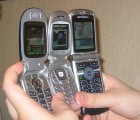Mobile Digital Storytelling
A November 2007 column for TCEA's TechEdge magazine

In the nineteenth and twentieth centuries, most students and teachers in schools were sharply limited in the potential audience for which they could share their ideas and publications. Gone are the days when the top destination for exemplary student work was the family refrigerator. The potential audience for student work has changed dramatically in the 21st century with the advent of read/write web (web 2.0) tools like blogs, wikis, social networking websites, and video publication venues like YouTube. The ability for anyone with access to a web browser to publish text, audio, and video on the global stage of the Internet is a disruptive, challenging, and empowering phenomenon. In the context of digital storytelling, a variety of tools are available which permit learners of all ages to constructively share their voices and perspectives via the Internet using free website tools, readily available technologies like cell phones, and relatively affordable commercial hardware tools like portable audio recorders. This article explores several options for mobile digital storytelling.




